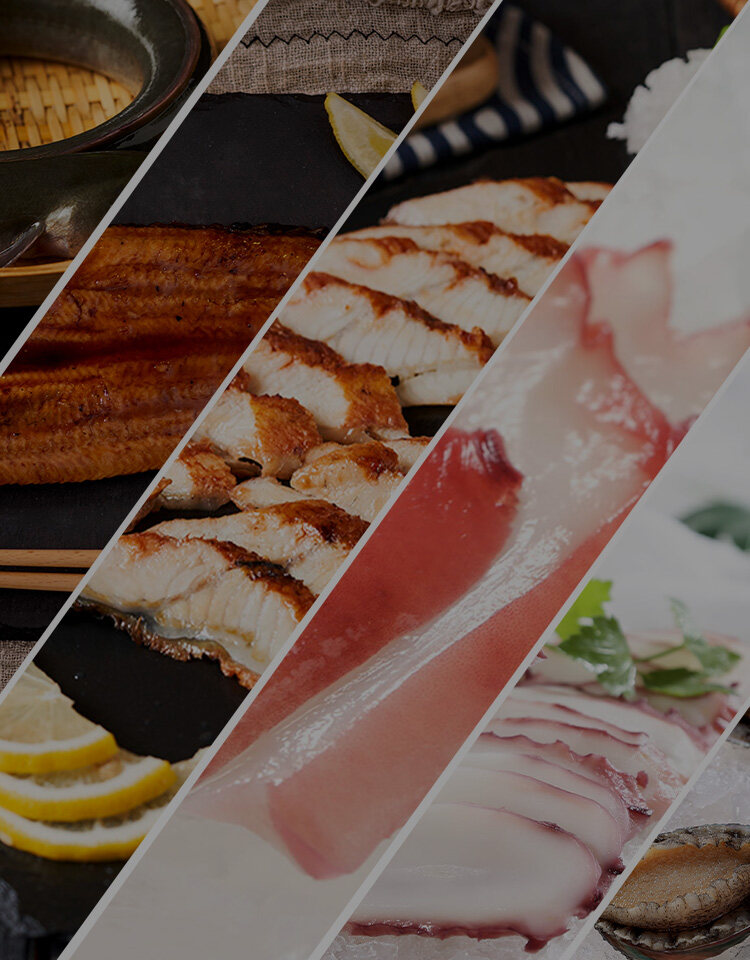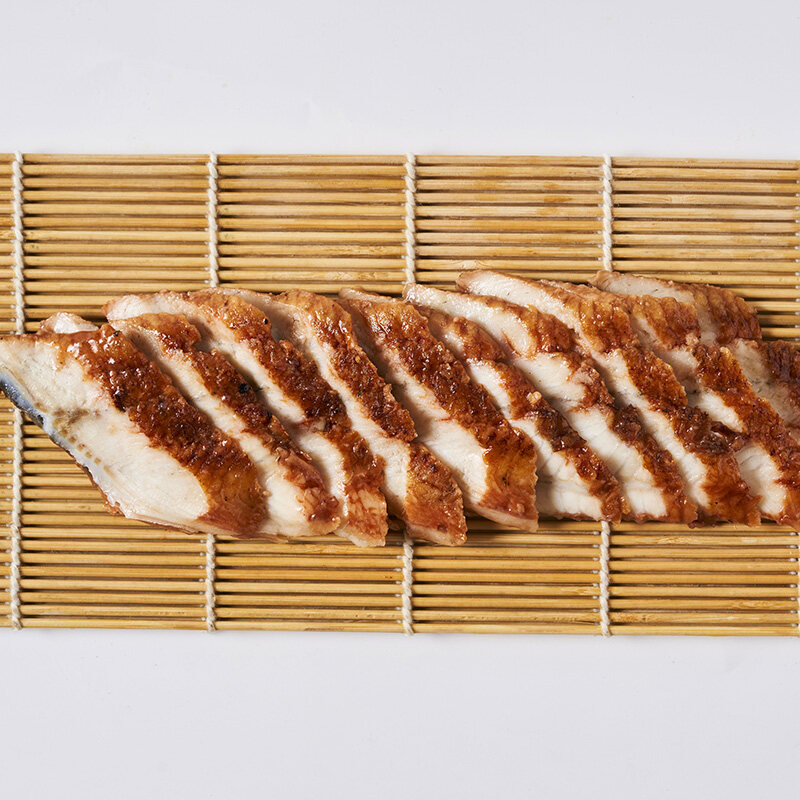Email cannot be empty
Password cannot be empty
Email format error
Email cannot be empty
Email already exists
6-20 characters(letters plus numbers only)
The password is inconsistent
Email format error
Email cannot be empty
Email does not exist
6-20 characters(letters plus numbers only)
The password is inconsistent


Key for Restaurateurs: Wholesale Seafood Buying and Cost Control
If you’re running a restaurant, especially one that specializes in seafood, your success heavily relies on the quality of the ingredients you source. But when it comes to seafood, there’s a lot more to consider than just picking up the freshest catch. To stay competitive and ensure you're offering your customers a premium dining experience, you need to be strategic about purchasing and managing costs, particularly when it comes to wholesale seafood for restaurants.
In this article, we’ll explore essential strategies to help you make informed decisions, control costs, and build lasting relationships with your seafood suppliers.
Why Wholesale Seafood for Restaurants Matters
When you’re sourcing ingredients for a restaurant, quality is key. But in the case of seafood, freshness and sustainability are just as crucial. Here are a few reasons why purchasing seafood in bulk from reputable wholesalers can be a game-changer for your business:
- Cost Efficiency: Wholesale seafood is generally much more cost-effective than buying small quantities from retail suppliers. This is particularly important for restaurants with high seafood demand, as it can significantly reduce food costs.
- Consistent Supply: Reliable wholesalers offer a steady supply of seafood, ensuring that you never run out of ingredients. This is essential, especially for restaurants that feature seafood prominently in their menu.
- Variety and Flexibility: Working with a wholesale supplier gives you access to a variety of seafood options, which allows you to get creative with your menu and cater to different customer preferences.
However, as beneficial as buying wholesale seafood can be, it comes with its own set of challenges. Let’s dive into some of the best practices for managing this aspect of your restaurant business.
1. Building a Strong Relationship with Your Supplier
The relationship you build with your wholesale seafood supplier can make or break your restaurant's operations. When selecting a supplier, it’s essential to choose someone who is reliable, communicative, and understands the specific needs of your restaurant.
How to Build a Strong Supplier Relationship
- Ask for Samples: Always request samples before placing a large order. This gives you a chance to inspect the quality of the product and ensure it meets your standards.
- Negotiate Terms: Wholesale seafood suppliers are often open to negotiation, especially when you are a regular customer. You can discuss prices, delivery schedules, and even payment terms that best fit your restaurant’s cash flow.
- Be Transparent About Your Needs: If you need a specific cut of fish or a certain type of shellfish, communicate your requirements clearly. A good supplier will work with you to meet your needs and offer advice on how to get the best out of seasonal offerings.
For instance, when I opened a coastal restaurant specializing in fresh seafood, I made sure to visit the supplier’s warehouse, check their storage facilities, and even see the catch before making any decisions. After all, if you don’t trust the product, how can your customers?
2. Understanding Seafood Seasonality and Market Trends
One thing that often catches new restaurateurs off guard is the seasonality of seafood. Different types of fish and shellfish are available in varying quantities throughout the year, and this can impact both pricing and availability.
Seafood Seasonality and How It Affects Pricing
- Wild-Caught vs. Farmed: Wild-caught seafood like tuna and salmon can be more expensive during off-season months, while farmed seafood (like tilapia or shrimp) may be more affordable year-round.
- Increased Costs During Peak Demand: If a specific fish species is in high demand due to seasonal trends or special events (like the holidays), you might see the price go up. Conversely, if there’s an overabundance of a particular fish, you may find deals.
Knowing when different types of seafood are in season allows you to plan your menu and purchasing strategy accordingly. For example, in the spring, shellfish such as oysters and clams are at their peak, so they’re often cheaper, allowing you to offer specials on those items.
3. Implementing Cost Control Techniques
Cost control is one of the most challenging aspects of running a restaurant, especially when it comes to ingredients as volatile as seafood. Here are a few ways to keep seafood costs in check without sacrificing quality:
Track Your Usage and Waste
Tracking how much seafood you use on a weekly or monthly basis helps you forecast future needs and reduce waste. If you’re throwing away a significant amount of seafood, it might be worth revisiting portion sizes or improving your inventory management.
Buying in Bulk
As mentioned earlier, buying seafood in bulk can save you money. However, it’s important to be mindful of how much you’re purchasing at once. Too much bulk buying can lead to spoilage, especially if you don’t have enough storage space.
For example, when you buy wholesale seafood for restaurants, consider ordering in portions that align with your typical demand and available storage space. A smart strategy is to focus on purchasing items that have longer shelf lives, such as frozen seafood, and combine those with fresh items that rotate regularly.
Diversify Your Menu Based on Availability
Offer seafood specials based on what’s in season and what’s priced competitively. This flexibility can help you reduce costs during certain times of the year. Let’s say you’re seeing a great price on fresh haddock but your menu traditionally features salmon. You can easily swap haddock into some of your popular dishes, adjusting pricing to keep your food cost margins intact.
4. Storage and Handling Best Practices
The key to maintaining the freshness of your wholesale seafood for restaurants is proper storage and handling. Seafood is highly perishable, so the way you store it directly impacts its quality and your bottom line.
Temperature Control
Ensure your seafood is stored at the proper temperature to prevent spoilage. Ideally, fish should be stored at 32°F (0°C) to maintain freshness. For frozen items, ensure they’re kept at a constant freezing temperature to avoid thawing and refreezing.
Proper Thawing and Preparation
If you're buying frozen seafood, it's important to thaw it properly. Never leave seafood to thaw at room temperature, as this can encourage bacterial growth. The best method is to thaw seafood in the fridge overnight. Additionally, preparing the seafood correctly before cooking can help you maximize portion size and minimize waste.
5. Sustainability and Ethical Sourcing
As more consumers demand sustainability, ethical sourcing is a crucial consideration when purchasing wholesale seafood. Overfishing is a significant concern for the seafood industry, and many restaurants are now prioritizing suppliers who adhere to sustainable practices.
Questions to Ask About Sustainability:
- Does your supplier follow sustainable fishing practices?
- Do they have certifications like the Marine Stewardship Council (MSC) or Aquaculture Stewardship Council (ASC)?
- Is the seafood traceable back to the source?
Choosing a supplier who prioritizes sustainable seafood helps you align with your customers’ values while also protecting the future of the industry. It can also be a selling point on your menu, as customers are increasingly willing to pay a premium for ethically sourced seafood.
Making Smart Seafood Purchases for Your Restaurant
If you’re looking to ensure the freshest, highest-quality seafood while managing costs, it’s crucial to partner with reputable wholesalers who understand the needs of your business. For example, companies like Dongshui Food (a leading wholesale seafood supplier) offer competitive pricing, reliable shipping, and a range of sustainably sourced seafood options. By working with a supplier that aligns with your business goals, you can offer your customers a consistently excellent dining experience.


